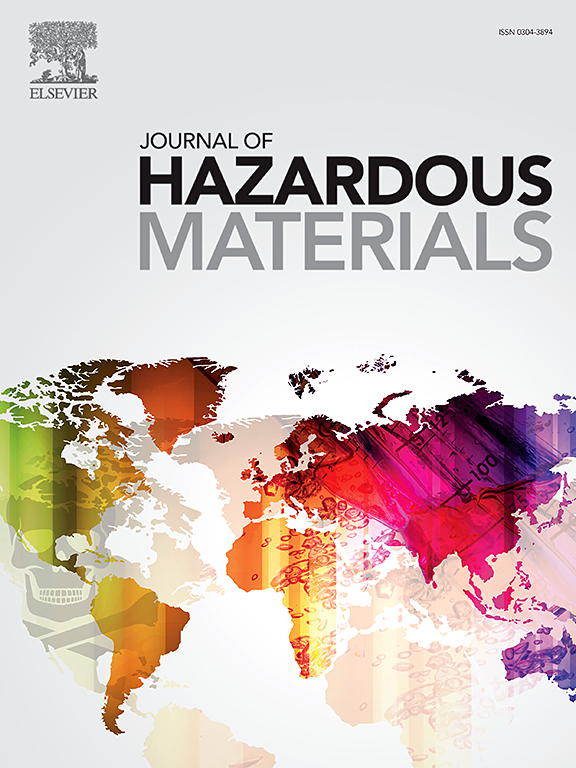儿童家庭环境作为抗菌素耐药性的储存库:来自抗生素耐药基因和病原体的不同城乡风险
IF 11.3
1区 环境科学与生态学
Q1 ENGINEERING, ENVIRONMENTAL
引用次数: 0
摘要
抗生素耐药基因和病原体对全球健康构成挑战,特别是对弱势儿童。然而,关于他们在家庭环境中存在的知识有限,孩子们花了大部分时间,城乡差异就更少了。我们收集了中国上海城市(n=31)和农村(n=34)地区儿童家中的尘埃,并通过宏基因组测序分析了微生物组、ARGs和病原体。家庭粉尘微生物组成在城市和农村环境之间存在显著差异。在家庭环境中广泛检测到ARGs(农村:758个亚型;城市:733)。城乡地区在ARGs和病原菌组成、多样性、共现模式、组装过程和网络驱动因素等方面也存在显著差异。具体而言,农村粉尘中ARG亚型的丰度差异更大。城市粉尘中富含临床临界多重耐药病原体(如鲍曼不动杆菌),而农村地区则富含植物相关病原体。随机过程主导了ARGs和病原体的组装,而环境因素可以部分解释它们的变化。温度与两个地区的总ARG丰度呈正相关。住宅绿化与ARG丰度在农村呈正相关,而在城市呈负相关。我们的研究结果表明,儿童家庭是抗菌素耐药性的储存库,敦促警惕农村ARG富集和城市多药耐药病原体对儿童健康的风险。本文章由计算机程序翻译,如有差异,请以英文原文为准。

Children’s home environments as reservoirs of antimicrobial resistance: divergent urban-rural risks from antibiotic resistance genes and pathogens
Antibiotic resistance genes(ARGs) and pathogens pose a global health challenge, particularly for vulnerable children. However, limited knowledge is on their existence in home environments where children spend majority of time, even less on urban-rural differences. We collected settled dust from children’s homes in urban(n=31) and rural (n=34) areas of Shanghai, China, and analyzed microbiomes, ARGs and pathogens through metagenomic sequencing. Home dust microbial compositions differed significantly between urban and rural environment. ARGs were widely detected in home environment (rural:758 subtypes; urban:733). Significant urban-rural differences were also observed in ARGs and pathogens composition, diversity, co-occurrence patterns, assembly processes and network drivers. Specifically, rural dust was enriched with more differentially abundant ARG subtypes. Urban dust was enriched with clinically critical multidrug-resistant pathogens (e.g. Acinetobacter baumannii), contrasting with rural areas enriched in plant-associated pathogens. Stochastic processes dominated the assembly of ARGs and pathogens, while environmental factors partially explained their variations. Temperature was positively associated with total ARG abundance in both areas. Residential greenness had a positive relationship with ARG abundance in rural but negative in urban settings. Our findings indicated children’s homes as reservoirs of antimicrobial resistance, urging vigilance against rural ARG enrichment and urban multidrug-resistant pathogen risks for pediatric health.
求助全文
通过发布文献求助,成功后即可免费获取论文全文。
去求助
来源期刊

Journal of Hazardous Materials
工程技术-工程:环境
CiteScore
25.40
自引率
5.90%
发文量
3059
审稿时长
58 days
期刊介绍:
The Journal of Hazardous Materials serves as a global platform for promoting cutting-edge research in the field of Environmental Science and Engineering. Our publication features a wide range of articles, including full-length research papers, review articles, and perspectives, with the aim of enhancing our understanding of the dangers and risks associated with various materials concerning public health and the environment. It is important to note that the term "environmental contaminants" refers specifically to substances that pose hazardous effects through contamination, while excluding those that do not have such impacts on the environment or human health. Moreover, we emphasize the distinction between wastes and hazardous materials in order to provide further clarity on the scope of the journal. We have a keen interest in exploring specific compounds and microbial agents that have adverse effects on the environment.
 求助内容:
求助内容: 应助结果提醒方式:
应助结果提醒方式:


